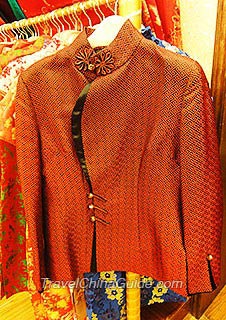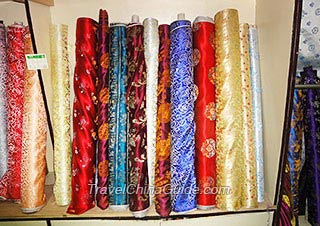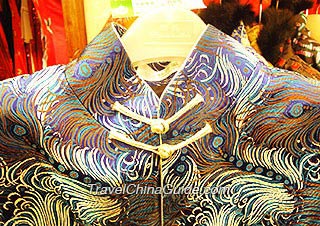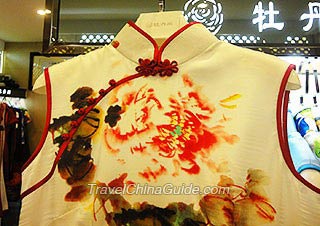Features of Traditional Chinese Clothing
During the long history of traditional Chinese clothing, changes, developments, and improvements occured all the time. However, Chinese clothing can still be easily told apart from others, all because of its unique features. Some of the general features include: cross-collar with junction leading to right, no buttons but tying with sash on the waist. In addition, there are many other detailed features that make the unparalleled style of Chinese clothing unique.
 |
| Tangzhuang Suit |
|
|
 |
| Material for Making Chinese Costume |
- Last updated on Apr. 20, 2021 -
Questions & Answers on Features of Traditional Chinese Clothing
Asked by Francesca from ITALY | Sep. 18, 2017 10:29 Reply
Reply
Can you tell me which is the best fabric to sew traditional chinese dancing dress with long sleeves?
Answers (1)
Answered by Lesily from UNITED KINGDOM | Sep. 19, 2017 00:58 1
1 2
2 Reply
Reply
Generally speaking, silk and cotton cloth are main materials to make traditional Chinese dancing dress. :)
Asked by Maryelen from USA | Jan. 17, 2016 11:08 Reply
Reply
Can you tell me about a traditional Chinese dancing dress?
It's white and has long sleeves to the floor and the dress is also floor length. The decorative colors include, yellow, blue, pink pastels. There is a colorful sash included and I think a braided tiara- like hat.
Answers (1)
Answered by Mike from IRELAND | Jan. 19, 2016 03:05 0
0 2
2 Reply
Reply
Maryelen, such a costume can be seen both in Han and ethnic minority dances. It doesn't have a specific name.
Asked by Faith Urbanec from USA | Mar. 04, 2014 09:23 Reply
Reply
what do you call the clothes the chinese wear on chinese new year
Answers (3)
Answered by LiuTing from PRC | Mar. 05, 2014 03:05 4
4 6
6 Reply
Reply
I don't know how people from the minorities call it. I am from Han and I am pretty sure that we call it Xin Yi Fu (brand-new clothes), haha.
Answered by Kyle from CHINA | Dec. 24, 2019 06:46 0
0 0
0 Reply
Reply
😂😂
Answered by Faith Urbanec from USA | Dec. 24, 2019 19:50 0
0 0
0 Reply
Reply
This is 5 years old dude.. It was for a project. You're late and I was trying to learn nothing funny about it

